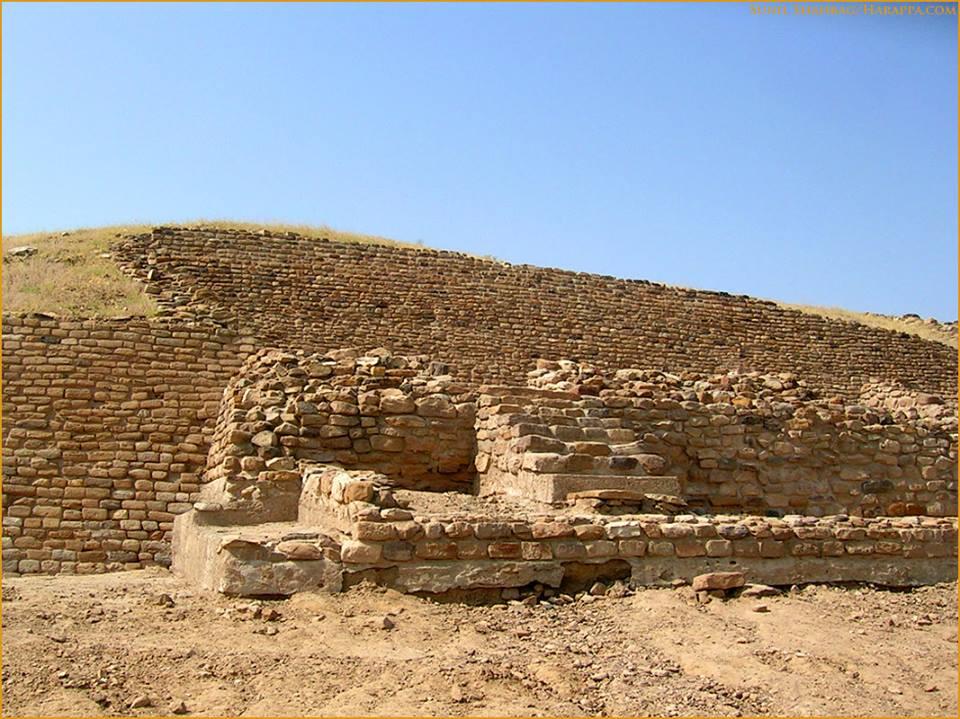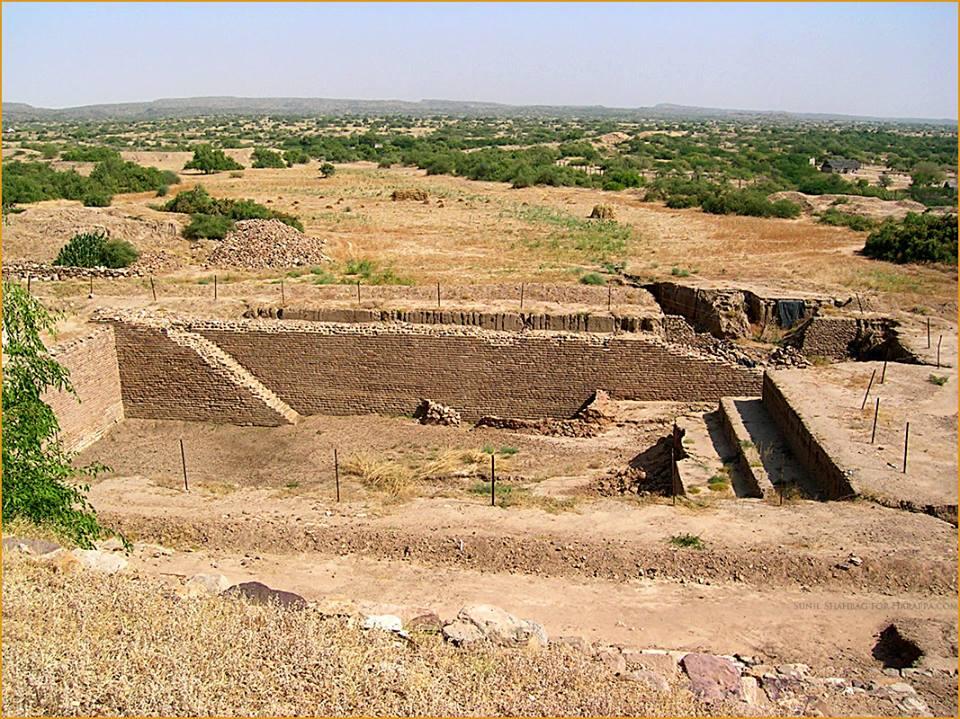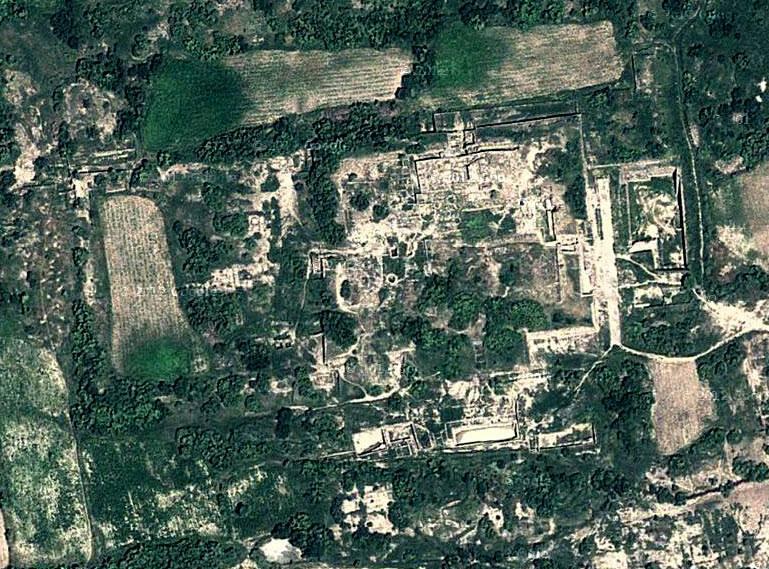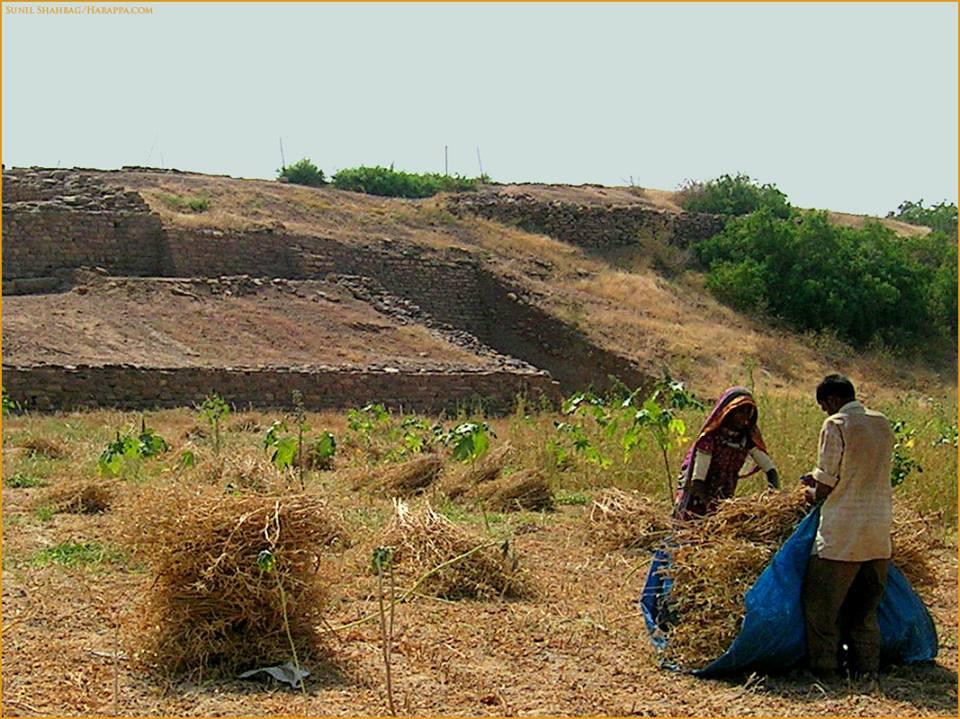By StephanieV. July 5th, 2014
Dholavira is located on Khadir Beyt, an island in the Great Rann of Kutch in Gujarat State, India. It was excavated between 1990 and 2005 by R.S. Bisht (the field research reports still await publication). In the same size range as Harappa and Mohenjo Daro, it has some of the best preserved stone architecture from the ancient Indus period. The city flourished between 2650 and 2100 BCE and seems to have been abandoned about 1900 BCE. It is thought to have controlled the movement of goods between the resource areas of Gujarat and core areas of the Indus plains. Included is an image showing an aerial view of a site that, like Harappa, blends well into a living agricultural environment.
Dholavira appears to have had several large reservoirs, and an elaborate system of drains to collect water from the city walls and house tops to fill these water tanks. The Indus people seem to have shown great sophistication in managing water, making the speculation about climate change and monsoon patterns changing in the demise of the civilization just that, speculation.
For more information on Dholavira and water systems see "The Indus Valley Civilization: Masters of the River".
For more information on the resourcefulness with which the ancient inhabitants of Dholavira managed their water supply see Professor Shereen Ratnagar's lecture Science versus Social Science: Did the Rains do the Harappans in?








